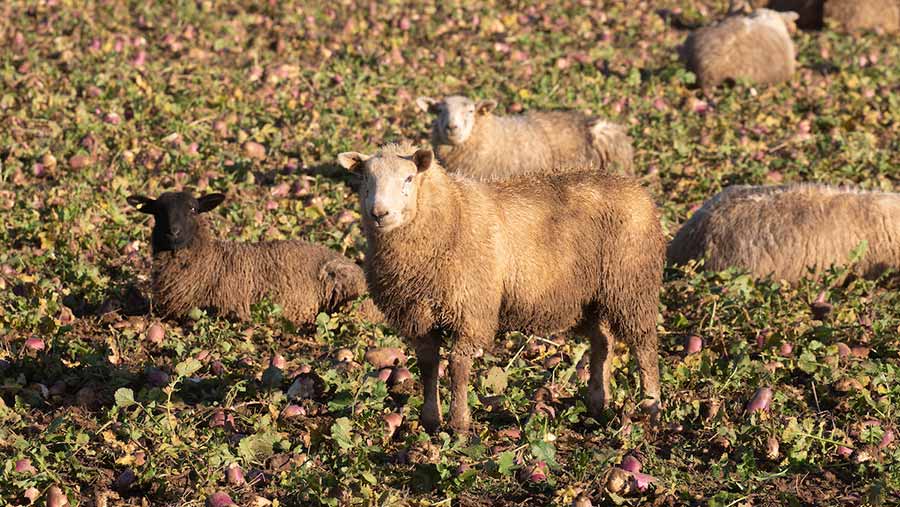Costs push store lambs back £21 to three-year low
 © Tim Scrivener
© Tim Scrivener Average GB store lamb prices fell to a pre-Covid low of £64.29 a head last week, as feed costs, limited domestic demand and falling finished lamb prices continued to drain confidence.
The three-year low comes amid farmers reporting waiting lists for deadweight outlets and some areas facing difficulties outwintering lambs due to frost and flooding.
Store lamb prices averaged £87 a head this time last year, almost £23 a head higher than current levels.
The gap between store prices and finished prices has been widening in recent years.
The last time store prices were close to current levels of £64 a head was in January 2020 and at this time finished liveweight lambs were averaging about 206-212p/kg.
See also: Lamb prices increase but remain under pressure
In comparison, finished lambs averaged 238.53p/kg liveweight for the week ending 14 January 2023, which is about 30p/kg lower than in January 2020. This is a clear sign of current high production costs limiting lamb values, say analysts.
However, some traders say discounted stores could give some businesses a late opportunity if sufficient forage is available, especially if Easter and Ramadan demand in April provide support for a rising market.
Pressure
But Ulster Farmers Union beef and lamb chairman Pat McKay pointed to “unprecedented financial pressure” in Northern Ireland in the new year by businesses finishing lambs.
Calling for processors to lift prices, Mr McKay said some farms had paid as much as £405/t for finishing pellets, while deadweight prices had tumbled £15 a head in three weeks.
Store lamb averages flagged behind 2021 levels for much of the summer and autumn last year, dropping from more than £80 a head in July to nearer £70 a head as drought-enforced weaning and selling outbalanced supply and demand.
NFU chief livestock adviser John Royle said feed availability and cost hikes were affecting all long-term stock, but confidence around the sheep rings was lower than in the beef sector.
“I think even the most efficient producers recognise that the farmgate price isn’t keeping pace with the rise in the cost of production,” said Mr Royle.
“It’s certainly more pronounced with lamb, as the price is back sharply on this time last year.
“I’d say we’re seeing more confidence in the beef price, but rearing costs are impacting on price being paid for poorer quality calves and smaller/younger stores due to high rearing and finishing costs.”
